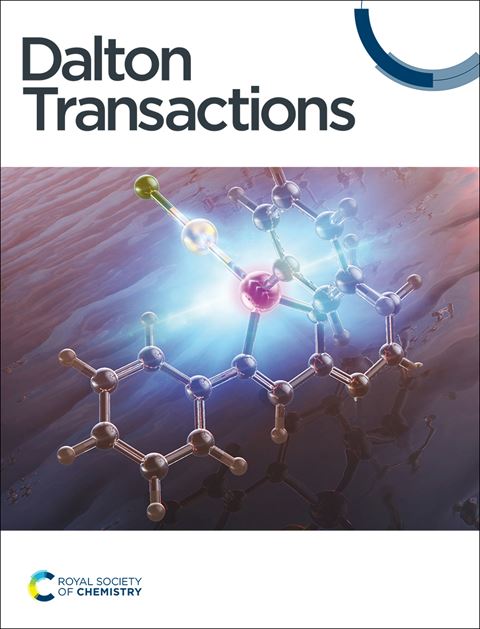The crucial role of acetonitrile in the mechanism of Pd(II)-catalyzed activation of polar vinyl monomers.†
IF 3.5
3区 化学
Q2 CHEMISTRY, INORGANIC & NUCLEAR
引用次数: 0
Abstract
The migratory insertion reaction of a polar vinyl monomer into the Pd–alkyl bond and the chain walking process are two of the key steps in the catalytic cycle for the synthesis of functionalized polyolefins through coordination/insertion polymerization. Here we present a detailed NMR investigation to gain insight into these fundamental steps and demonstrate the critical role of traces of MeCN in this process. We used Pd(II) complexes containing a N–N' bidentate pyridyl-pyridylidene amide (py-PYA) ligand, which are known to cooligomerize ethylene and methyl acrylate (MA). The reaction of three related Pd–(py-PYA) complexes, viz. neutral [Pd(CH3)Cl(py-PYA)], 1a, and cationic derivatives [Pd(CH3)(NCCH3)(py-PYA)][X], X = BArF 1b, PF6 1c, with either MA or N,N-dimethylacrylamide (DMA), showed distinct reactivity with the two polar monomers. While 4-, 5-, and 6-membered palladacycles, resulting from the migratory insertion reaction of the polar monomer into the Pd–CH3 bond and subsequent chain walking, were detected with both monomers, their amounts varied considerably with the type of polar monomer, the anion, and the amount of MeCN. Specifically, we found that the coordinating ability of MeCN plays a critical and ambivalent role: on one hand, it hampers the coordination and insertion of the polar olefin, and on the other hand it markedly suppresses the chain walking process. Moreover, we report here the first solid state structure of a 5-membered metallacyclic species derived from DMA insertion into the Pd–CH3 bond. The palladacylic complexes are remarkably robust towards ethylene, though they react with carbon monoxide to form the palladium acyl species opening perspectives for these complexes to catalyze CO/DMA copolymerization.求助全文
约1分钟内获得全文
求助全文
来源期刊

Dalton Transactions
化学-无机化学与核化学
CiteScore
6.60
自引率
7.50%
发文量
1832
审稿时长
1.5 months
期刊介绍:
Dalton Transactions is a journal for all areas of inorganic chemistry, which encompasses the organometallic, bioinorganic and materials chemistry of the elements, with applications including synthesis, catalysis, energy conversion/storage, electrical devices and medicine. Dalton Transactions welcomes high-quality, original submissions in all of these areas and more, where the advancement of knowledge in inorganic chemistry is significant.
 求助内容:
求助内容: 应助结果提醒方式:
应助结果提醒方式:


